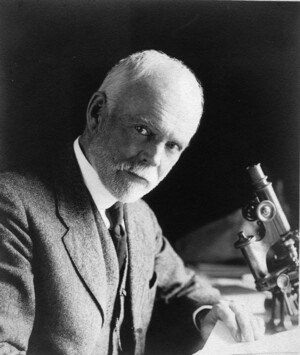Alfred Francis Huettner (1882-1955) worked with some of the greatest embryologists of the 20th century, spending time in the laboratories of Thomas Hunt Morgan, Edmund Beecher Wilson, and the lively group at Columbia University. Although trained as an embryologist, it is not for experimental work that Huettner is most widely known—his primary contribution came in the form of the photographs and drawings of embryos that he created to populate his text Fundamentals of Comparative Embryology of the Vertebrates. This valuable resource for teachers and students went through several editions. In addition, he is known without being named through his excellent photographs, some of which have been widely circulated without attribution.
Huettner was born in Reichenbach, Germany, and moved to the United States in 1900. While Huettner ended up as a biologist, his early years in the U.S. were spent in the upper midwest. It was through these years of working and traveling that Huettner developed both the technical skill and aesthetic for photography. He studied at Valparaiso University in Chicago for two years, working as a male nurse and taking pictures of students. Huettner worked various odd jobs in a number of locations and received his B.A. degree from the University of South Dakota in 1916. Shortly after receiving his degree, Huettner left South Dakota to follow his passion for biology at Columbia University in New York. At Columbia, Huettner studied under the famous cell biologist, Edmund Beecher Wilson. He received his Ph.D. in 1923 with a dissertation on “The origin of the germ cells in Drosophila melanogaster.” Huettner’s work included close study of cells, embryology, and especially molecular aspects of the development of form, known as morphogenesis.
Huettner taught at Columbia until 1932, when he moved to Washington Square College of New York University. There he remained until 1938 when he joined Queens College until his retirement in 1952.
A biographical sketch by his colleague and friend Donald Lancefield noted that Huettner enjoyed gardening and that he “was a man of many talents.” It is for his illustrations and photographs – both scientific and personal – that he stands out even among giants of his time.
- Donald Lancefield, “Alfred F. Huettner, Scientist and Teacher,” Science. 1955: 122: 953.
- Jo Hall, “Brothers excelled in Photography,” Mobridge Tribune (June 15, 1988) p. 7

